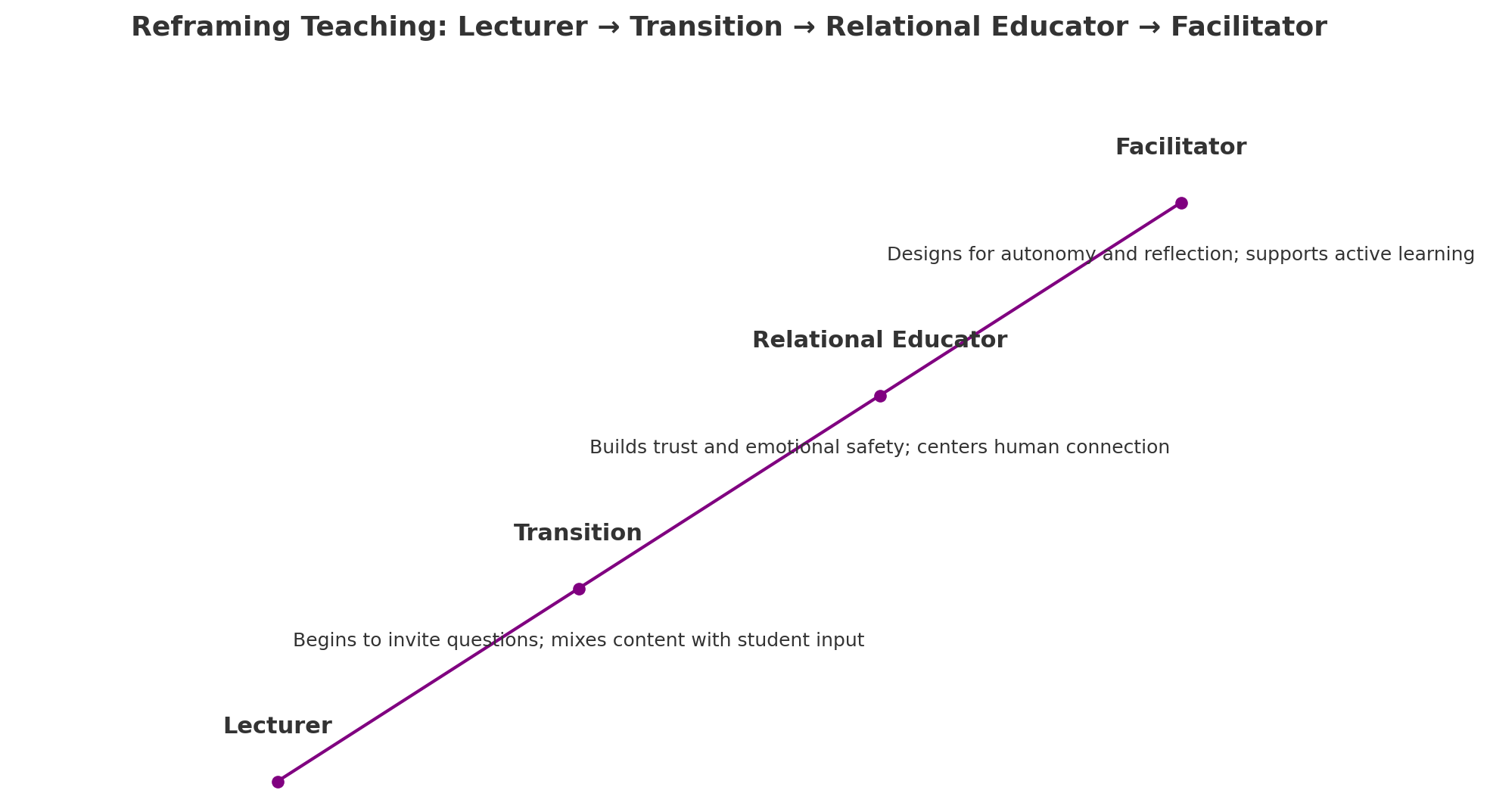Post #6 Final Reflections
When I started this project, I was both curious and unsure. The question I chose is: Are educators becoming facilitators rather than lecturers?
But I didn’t know at the time how to recognize what facilitation actually looked like in practice. I had previously thought that becoming a facilitator meant doing less. Now, I realize: It means doing something more intentional, more learner-centered, and more proactive.I began to explore this question, wondering if teachers were becoming guides in open and distributed learning spaces. But as the observations, readings, and interviews deepened, a deeper question surfaced:
What does it mean for teachers to stop controlling learning and start trusting it?
It’s not just a shift in technology. It’s more than replacing classroom lectures with breakout rooms or assigning discussion posts. It’s a shift in identity and mindset. It changes the type of authority a teacher has and the way that authority is used.
In a traditional setting, teachers are responsible for delivering content. But facilitators are not in charge of delivering content; they are in charge of designing it. They ask:
- What kind of thinking do I want my students to engage in?
- What conditions make that thinking possible?
This shift moves teachers from being the center of attention to being the designers of learning environments quieter, but in many ways more influential role.
Why is this shift important
Empowering student autonomy.
When teachers let go, students take the initiative. Instead of waiting for the “right answer,” they begin to construct meaning on their own. This leads to deeper engagement and longer-lasting understanding.
It recognizes the diversity of student learning styles
Facilitators are able to adapt to change. They respond to student confusion with curiosity rather than correction. This flexibility creates space for more learners to thrive, not just those who have succeeded in a lecture-based instructional system.
It builds relational trust
Leading requires empathy. It sends the message, “I think you’re capable. I’m here to support you, not dominate you.” This shift alone can change how students feel in the classroom, especially in an online classroom.
The program made me realize that becoming a tutor doesn’t mean less teaching, but rather it means more focus, humility, and respect for the learner’s role in teaching.
At first, I thought the difference was in the structure: lecture and discussion. But now I realize that the difference is about relationships. It’s about how power, knowledge, and presence are shared.
To summarize, I think that the teacher’s role is now shifting towards facilitator to some extent, and this thing is happening. I expect that this change will allow students to have more autonomy in their future learning and take the initiative to learn what they need to know. Instead of being a teacher, the teacher’s role will require more effort in designing the curriculum, motivating the students, and giving the students some room to maneuver on their own.

Photo by Aaron Burden on Unsplash
Barnes, C. L. (2016). Where’s the teacher? In Humanizing Online Teaching and Learning. https://humanmooc.pressbooks.com/chapter/wheres-the-teacher-defining-the-role-of-instructor-presence-in-social-presence-and-cognition-in-online-education/


